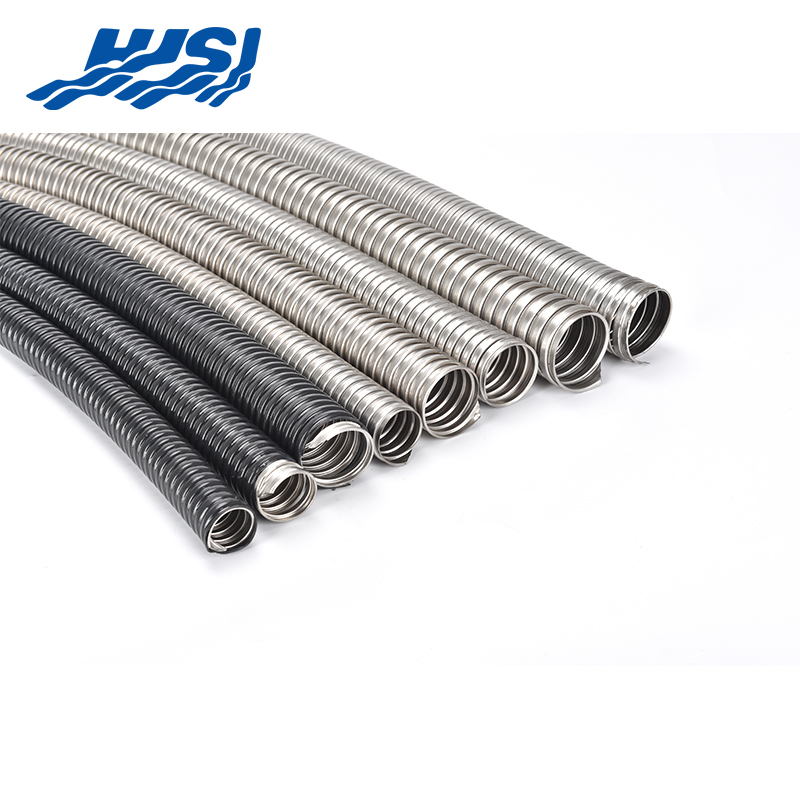In the realm of electrical installations, the need for durable and secure conduit systems is paramount. Enter the versatile and robust Flexible Steel Conduit (Flexible Steel Conduit), a material that has been gaining significant attention for its ability to protect electrical cables from a multitude of threats. Flexible Steel Conduit is not just a conduit; it's the armor that safeguards the lifelines of modern infrastructure, earning its nickname as the "cable's bulletproof vest".
The construction industry recognizes the importance of protecting cables from environmental hazards and physical damage. Flexible Steel Conduit, with its malleable yet sturdy structure, offers a solution that is both flexible and strong. It can be bent and shaped to fit around complex structures without compromising its protective capabilities, making it ideal for installations where a rigid conduit would be impractical.
One of the key benefits of Flexible Steel Conduit is its resistance to corrosion. Traditional PVC conduits can degrade over time when exposed to harsh weather conditions or chemicals. However, Flexible Steel Conduit's steel composition ensures that it remains intact and functional, even in the most demanding environments. This corrosion resistance not only prolongs the life of the conduit but also the cables it encases, reducing maintenance costs and downtime.
In addition to its durability, Flexible Steel Conduit is also recognized for its ability to withstand physical impacts. Whether it's accidental drops during installation or impacts from external forces, Flexible Steel Conduit can absorb the shock, ensuring the cables within remain safe and operational. This is particularly important in industrial settings where heavy machinery and equipment are in constant motion.
The installation process of Flexible Steel Conduit is another area where it excels. Unlike rigid conduits that require precise measurements and can be time-consuming to install, Flexible Steel Conduit can be easily maneuvered into place, saving time and labor costs. Its flexibility also allows for easier routing around obstacles, which can be a significant advantage in retrofit projects where existing structures limit the path of new cable runs.
Safety is a critical consideration in any construction project, and Flexible Steel Conduit plays a vital role in ensuring electrical safety. It provides a barrier against electrical shorts and reduces the risk of fire by containing any electrical faults within the conduit. This containment is crucial in preventing electrical hazards from spreading, thus protecting both property and lives.

In terms of aesthetics, Flexible Steel Conduit offers a sleek and professional appearance. It can be painted to match the surrounding environment or left in its natural steel finish, providing a clean and modern look to any electrical installation. This versatility in appearance makes Flexible Steel Conduit a popular choice for both commercial and residential applications.
The environmental impact of Flexible Steel Conduit is also noteworthy. Steel is a recyclable material, and the manufacturing process of Flexible Steel Conduit has come a long way in terms of sustainability. By choosing Flexible Steel Conduit, contractors and builders are not only ensuring the durability and safety of their electrical systems but also contributing to a more sustainable future.
In conclusion, Flexible Steel Conduit is a multifaceted solution for cable protection. Its flexibility, strength, and durability make it an ideal choice for a wide range of applications. From resisting corrosion to withstanding impacts, Flexible Steel Conduit is the shield that protects cables, protecting them from the elements and ensuring their longevity. As the construction industry continues to evolve, Flexible Steel Conduit stands out as a reliable and effective solution, proving that it's not just a conduit but a vital component in the safety and efficiency of electrical systems.